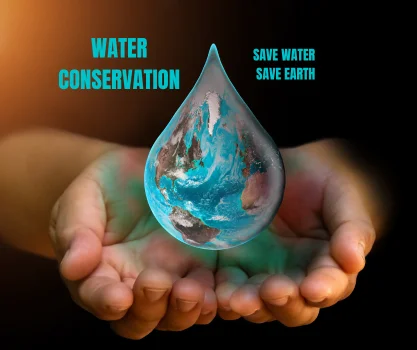Introduction:
Its here , water conservation in California started. California faced an unprecedented challenge as it endured three consecutive years of record-breaking drought. Governor Gavin Newsom urged urban water users to voluntarily reduce their consumption by 15%. However, the results fell significantly short, with statewide savings reaching only 7%. In this article, we delve into the findings, regional variations, and the need for further improvement in water conservation efforts.

Results and Regional Variances:
From July 2021 to March of the following year, Californian urban water users managed to save 7% of their water usage, equivalent to around 9 fewer gallons per person per day. However, this was only half of the original target. Notably, the North Coast and San Francisco Bay areas demonstrated the highest savings, with reductions of 14% and 12% respectively compared to the baseline year of 2020. In contrast, the Tulare Lake and Colorado River regions achieved the least reduction, with 4% and 2% respectively. It is very much important to note that these figures not at all include agricultural water usage.
Acknowledging Long-term Conservation Efforts:
State officials emphasize the need to recognize the long-standing conservation efforts made by Californians over the years, especially during the 2012-2016 drought. These efforts paved the way for subsequent water-saving practices. However, there is still ample room for improvement, as the average residential water usage statewide remains at approximately 85 gallons per person per day. Achieving the desired 15% reduction would lower this to 79 gallons per day.

Reflecting on the Voluntary Approach:
While the 7% reduction is commendable within the given timeframe, experts have raised concerns about the voluntary nature of the water conservation campaign. Some argue that implementing mandatory restrictions, as was done during the 2012-2016 drought under Governor Jerry Brown, would have yielded better results. During that period, residents managed to reduce water use by 24.5%. Critics suggest that a voluntary approach during severe drought conditions can be challenging, particularly when there is inconsistency in messaging and a lack of clarity about the gravity of the situation.
The Need for Further Action:
While the 7% reduction represents progress, it falls significantly short of the initial target. Experts from the Pacific Institute suggest that Californians have the potential to achieve even greater water savings, ranging from 30% to 48%, by adopting existing technologies, efficiency standards, and low-water use landscaping. By implementing these very measures, indoor water use could be reduced to as low as 25 to 35 gallons per person per day. The underwhelming response to the voluntary call for conservation highlights the necessity for more proactive measures, consistent messaging, and a comprehensive approach to address future water challenges effectively.
Strategies for Effective Water Conservation:
To further empower Californians in their water conservation endeavors, here are some practical strategies to implement:
Embrace the Power of Short Showers: Reducing shower durations can significantly decrease water consumption without sacrificing cleanliness.
- Address Leaks Swiftly: Promptly fix leaks in faucets and appliances to prevent unnecessary water waste.
- Mindful Lawn Care: Adjust watering schedules to align with your lawn’s needs and consider drought-tolerant landscaping options.
- Harvest Rainwater: Collect and store rainwater for non-potable purposes such as watering plants or cleaning.
- Rethink Car Washing: Opt for car washes that use water efficiently or reduce the frequency of car washing.
- Maximize Water Use Efficiency: Adopt water-saving practices while cooking, such as using minimal water for boiling or steaming.
- Small Actions, Big Impact: Remember to turn off the faucet when brushing your teeth to conserve water.
- Upgrade to Water-Efficient Fixtures: Consider installing water-efficient toilets that consume less water per flush.
- Nature’s Resilience: Planting drought-resistant plants into gardens, helps in reducing the need for excessive watering, which will lead to water conservation
Conclusion:
California’s urban water conservation efforts have shown both successes and challenges. While a 7% reduction in water usage is commendable within a relatively short timeframe, it underscores the need for stronger and more decisive action. Achieving long-term water conservation goals requires a combination of mandatory restrictions, improved communication, and the adoption of efficient technologies. By making water conservation efforts a part of their life, Californians can work towards a sustainable future, making sure the availability of this precious resource for generations to come.
Wanna know about Amber Heard’s new upcoming movie , then click here

[…] Wanna know about the water scenario That is happening in the state of California , then Click Here […]